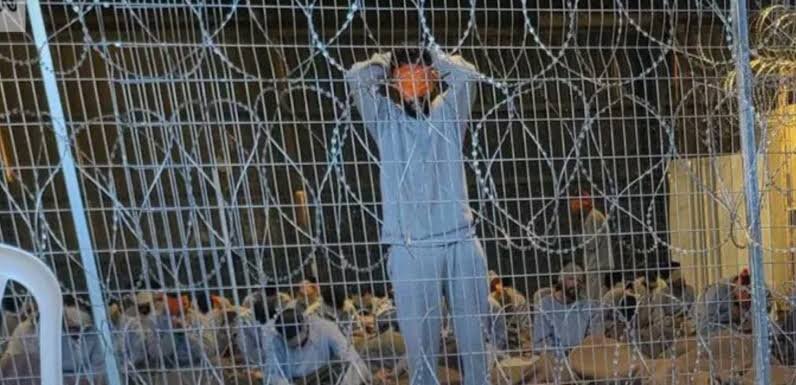Evidence of systematic torture of Palestinians is horrific

TEHRAN – The discovery of 135 mutilated Palestinian bodies returned to Gaza has shed light on a disturbing pattern of torture within the Israeli occupation regime’s prison system.
This is especially evident at the regime’s Sde Teiman military facility in the Negev desert, as reported by several news outlets, including the Guardian, and documented by other organizations.
The bodies, identified through Hebrew-language tags as having been held at Sde Teiman, show unmistakable signs of torture and execution. Gaza’s health ministry confirmed that many bore evidence of blindfolding, handcuffing, and point-blank gunfire.
According to Dr. Munir al-Bursh, “The document tags inside the body bags are written in Hebrew and clearly indicate that the remains were held at Sde Teiman.”
Sde Teiman has become synonymous with cruelty. The facility, described by Israeli whistleblowers and human rights investigators as a site of “systematic torture and killings,” operates as both a detention center and a holding ground for bodies brought from Gaza.
Prisoners there, including wounded civilians kidnapped by Israeli occupation forces from Gaza’s hospitals, were shackled to beds, blindfolded, and forced to wear diapers. Testimonies from released detainees paint a grim picture of humiliation and pain.
Palestinian journalist Shadi Abu Seido recounted being forced to remove his clothes for ten hours, kept handcuffed and blindfolded for months, and witnessing the deaths and psychological collapse of fellow inmates.
“They brought dogs that urinated on us,” he said. “When I asked why I had been arrested, they answered: ‘You will die hundreds of times.’”
The physical condition of the returned bodies speaks to the brutality of their captivity.
Doctors in Khan Younis documented crushed limbs, ligature marks, and signs of execution-style gunshots. “These findings clearly indicate that the Israeli occupation carried out acts of murder, summary executions, and systematic torture,” medical officials concluded.
One body, identified as 34-year-old Mahmoud Ismail Shabat, had rope marks around the neck and legs mangled by tank tracks. His family said this is evidence of extreme violence that is “unimaginable.”
In contrast, Israeli captives released from Gaza during recent ceasefires appeared in relatively stable physical condition, despite the unprecedented siege and bombardment.
The stark difference underscores a grim paradox: while the occupation regime accuses Hamas of inhumanity, it continues to torture, maim, and kill Palestinians under its custody, without consequence.
Organizations and prominent international human rights organizations have long warned of these abuses. Activist Naji Abbas described the evidence as “horrifying – yet, sadly, not surprising,” adding that the deaths and mutilations “corroborate what we have documented over the past two years about systematic torture in Israeli detention facilities.”
Rights groups have called for an independent international investigation, arguing that “the unprecedented number of Palestinians who have died in Israeli custody leaves no doubt” about the scale of the violations.
Yet despite the mounting evidence, global reaction remains muted. The Israeli occupation army has claimed internal probes, but such inquiries have historically never served anything close to accountability and have been redeclared by UN experts for allowing torture to expand.
The regime's prison system has been accused of vastly escalating the torture of Palestinian inmates illegally held behind bars since the terrorist cabinet of Benjamin Netanyahu came to power. Its security minister, Itamar Ben-Gvir, stands accused of widely expanding the torture campaign of Palestinians.
The United Nations has reported at least 75 Palestinian deaths in Israeli occupation prisons since October 2023, but no sanctions, no international tribunal, no concrete action, or any punitive measures have followed.
The bodies returned from Sde Teiman stand as grim evidence of an ongoing campaign of impunity. As one bereaved mother asked, “Where is the world?” The question hangs unanswered, an indictment of a global order that condemns torture in words, but tolerates it in silence when the victims are Palestinian.
Leave a Comment